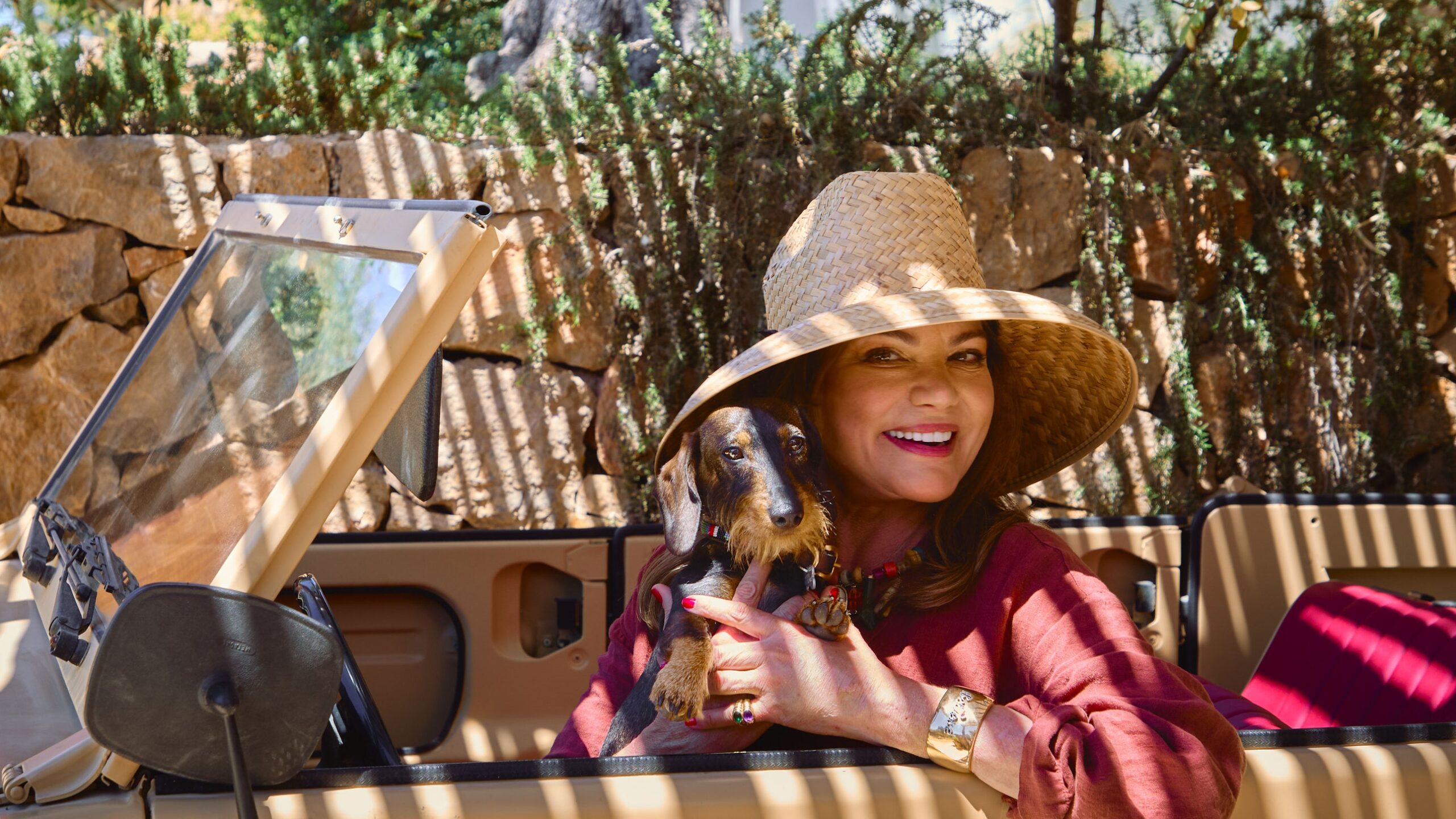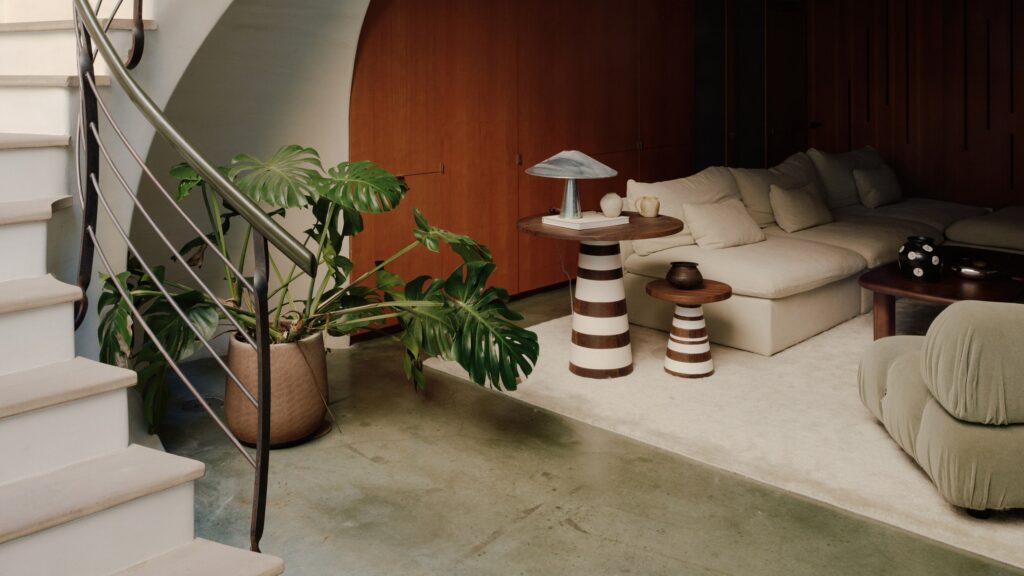Her husband was adamant: The investment manager would accept any place for a vacation home other than Ibiza, the Spanish island known far and wide for its wild nightlife, hedonistic discotheques, and celebrity sightings. “We started with the Hamptons, then Greece, and then Mallorca, because he plays golf, and it has plenty of courses,” says his ebullient wife, Emma Roig Askari, a contributing editor at Vanity Fair Spain, a TV commentator for Atresmedia, and a Christie’s ambassador. Her secret weapon was simple: to take her recalcitrant husband to Ibiza offseason, “when the valleys are full of flowers and there’s beautiful sunlight. Little by little, he got interested.”
Three years of diligent searching later, the London-based couple and their relieved grown children—“They were so happy that we’d finally decided on something”—found a mountainside to call their own. There, with Rolf Blakstad of Blakstad Design Consultants, an esteemed Ibiza firm founded in the 1950s, they began to build a dream house overlooking the sea and inspired by the island’s laid-back traditional style. What eventually emerged was a low, rambling white residence with enough bedrooms for family and friends and enough land to cultivate a garden of largely native Mediterranean plants, courtesy of British landscape guru Tania Compton, better known for her work at English country estates and being the contributing gardens editor of The World of Interiors, one of AD’s sister publications. “As much as I love our house, the biggest pleasure is the garden,” Roig Askari says. “I’m a firm believer in the transcultural: Nothing is better than an expert from one country and culture working on a landscape in a completely different country.”
When it comes to houses, though, it’s clear that Roig Askari—who decorated this place herself—believes in regionalism but with a twist. “My homeland is very much about wicker,” the Valencia native explains. But her pale, sun-tinged rooms—largely complexioned in straw yellows, bleached woods, dusty pink, various shades of white, and dashes of leaf-green—incorporate a mélange of internationalisms that work within a Spanish context. There are midcentury tapestries by the likes of Jean Lurçat and Joan Miró, skylights inspired by those in Valencia’s Arab bath houses, and, of all things, a sensual staircase modeled after one that the viceroy of vaulting Rafael Guastavino Jr. of Grand Central Terminal fame designed for Pittsburgh’s Carnegie Mellon University—only Roig Askari’s version is encased in snowy stucco rather than bare red brick. At the top of the staircase is an oculus cribbed from the Pantheon in Rome. “It doesn’t have anything to do with Mediterranean culture,” she admits of the opening, “but it’s one of my favorite things. Light that comes from above is very spiritual.”









